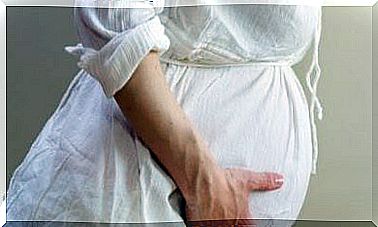Fontaneller: “hole ” In The Baby’s Head

Fontaneller can be one of the most frightening things about a baby for parents. And it’s not strange considering all the myths that exist around it.
But fontanelles are completely normal and even necessary for the child’s development; it is the soft parts of the baby’s skull where the skull bones meet. They are separate at birth and remain open for several months to allow the brain to grow.
Your child will not only have one opening, but six pieces, through which you will be able to feel its heartbeat. But do not be afraid, because at 18 months of age, these strange “holes” will be closed.
Continue reading to learn more about what fontanelles are and how to care for them.
What are fontanelles?
When your baby is born, the skull does not consist of a single bone, but a set that eventually unites and closes. Thus , they let the baby’s head grow during the first year of life.
The fountains are the areas where the bones have not yet grown together, which allows for rapid stretching and compression of the skull, which is needed as the brain grows.
This “incompetence” in the skull also allows the legs to move during birth and even lie on top of each other, so that the baby’s head can get through the birth canal.

What happens if I touch my baby’s fontanelles?
It is one of the most common clouds of unrest, but there is nothing to be afraid of. The membrane covering the fontanelles is resistant due to its extreme hardness. It is very difficult to perforate.
Do not forget that the fontanelle is already open at birth, as this nevertheless does not lead to any fractures or similar injuries to the baby. Just remember to be careful in every move you make with the baby.
At each visit to the pediatrician, he or she will actually examine, measure and feel these holes to monitor their size and ensure that growth is normal.
It is the only way to prevent or diagnose possible abnormalities in a child’s brain development.
When do the fountains close?
The most infamous fontanelle for parents is the one located on the upper, front of the skull. It is estimated to close between 7 and 19 months.
But as I said, it’s not the only such place on the baby’s head. The hole in the back of the skull usually closes between the first and third month.
On the sides there are also spaces at the level of the temple and behind the ear towards the base of the skull. The former usually close around six months after birth, and those behind the ears between 6 and 18 months.

Are the fontanelles normal or should I talk to a doctor?
The fountains should feel firm and slightly concave when touched. When the baby cries, lies down or vomits, the fontanelles may temporarily swell. However, when the child calms down and keeps his head upright, they should return to normal.
These spaces can be tense or protruding when fluids accumulate in the skull or during an increase in the cerebral pressure, which occurs, among other things, in hydrocephalus , or water skull.
However, if they return to normal when the baby calms down and raises his head, there is no danger.
If you notice that your child has very bulging fontanelles, and especially if it comes with fever or lethargy, you should take it to a pediatrician immediately.
If you gently caress your child’s head and feel it has sunk in, you should also contact your pediatrician as soon as possible. This may be a sign that the baby is dehydrated.
Sometimes the fontanelles close prematurely, and in that case it may be a condition called craniosynostosis, in which the baby’s head has an abnormal shape.
In the same way, a narrowing of the skull that leads to a lack of space can also be linked to an anomaly in the formation of the fontanelles.
In either case, the doctor may choose surgery to allow the brain to continue to grow, based on how many holes have been closed and how many are involved.
Therefore, you do not have to worry. Just pay attention to the condition of your little treasure’s fontanelles.








